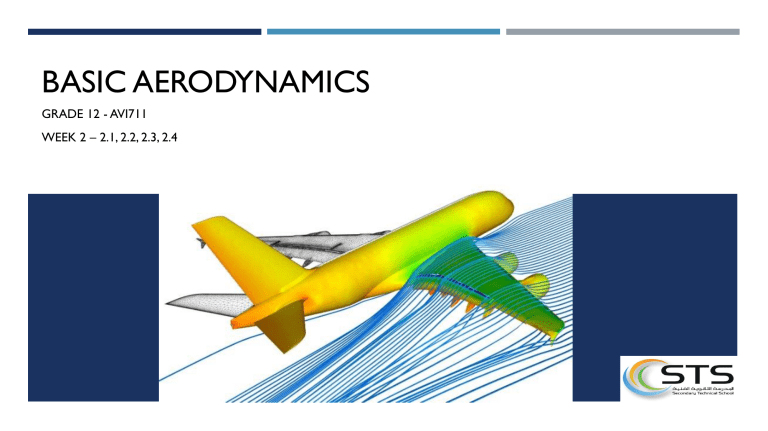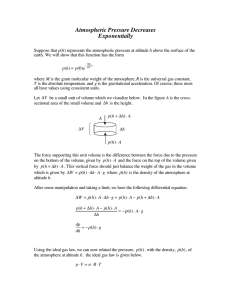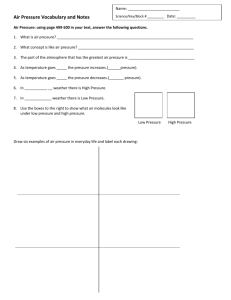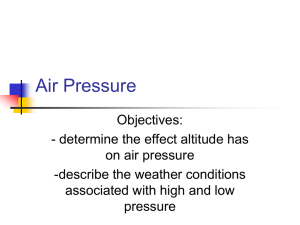
BASIC AERODYNAMICS GRADE 12 - AVI711 WEEK 2 – 2.1, 2.2, 2.3, 2.4 AIMS AND OBJECTIVES By the end of this lesson you should be able to understand the following terms in relation to aerodynamics: • Pressure. • Temperature. • Density. • International Standard Atmosphere (ISA) tables. GENERAL IDEA The physics of the atmosphere is very important to aviation. With altitude, we have a change in various properties. Most importantly, pressure, density and temperature. Anything that is airborne is affected depending on its altitude. The atmosphere of the earth is put into categories again depending on altitude. See the figure. PRESSURE - ATMOSPHERIC We know pressure is simply Force per Area. In this case we are talking about atmospheric pressure. It is the same concept only now we are talking about the pressure due to atmosphere or air. Think of it as the force acting on you (per unit area) because of all the air molecules surrounding you. These molecules become less and less as we go higher in altitude. From this we can then say that the pressure decreases with altitude. A video on D2L can help explain this. TEMPERATURE The regions at which aircrafts cruise happen to be much colder than at sea level. This can have huge affects on aircrafts such as icing. Icing is where water particles freeze on the airplane wings, increasing the aircrafts weight and causing a stall. We measure temperature in Kelvin (K). DENSITY Air molecules have mass. Pretend we are filling a box with air, the more air we can put inside, the heavier it would be. The amount you are able to fit into the box tells you how much density it is capable of having. Therefore, air density changes with altitude (it decreases). This is because gravity is weaker and there are less molecules pushing down on the aircraft. The SI unit for air density is kg/m^3. AFFECTS OF THESE PROPERTIES ON AIRCRAFTS 1 2 Take the equation for Lift, 𝐿 = 𝜌𝑉 2 𝑆𝐶𝐿 , where 𝜌 is the density of air. Therefore, the lower the value of 𝜌, the higher our lift force (which is good). Unfortunately, air pressure and temperature change the density of the air. For example, the colder the air then the higher the density as the molecules contract. INTERNATIONAL STANDARD ATMOSPHERE (ISA) Now that we know lift is dependent on the density, and that density can be affected by temperature and pressure, the pilot must take into account these differences. Pretend we are going to fly from the UK in the winter, the flight conditions and requirements will be different if we were to fly from UAE in the summer. So we must come up with a standard table with these properties at different locations and altitudes. The pilots and engineers can refer to this when calculating. We call this table the International Standard Atmosphere. This table informs us of the ambient (atmospheric) temperature, pressure and even the speed of sound at different altitudes.




